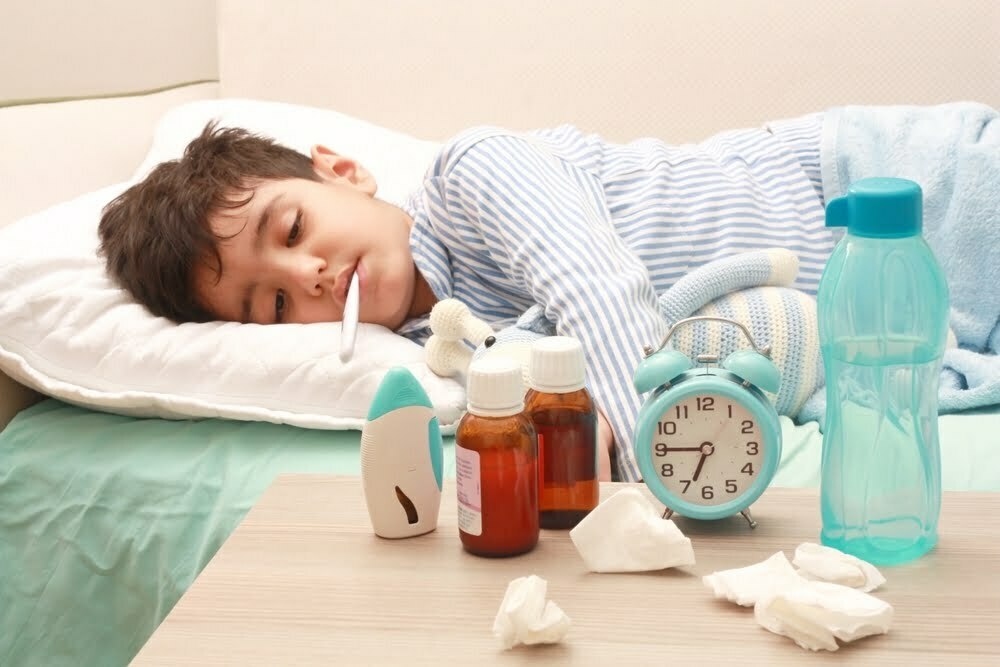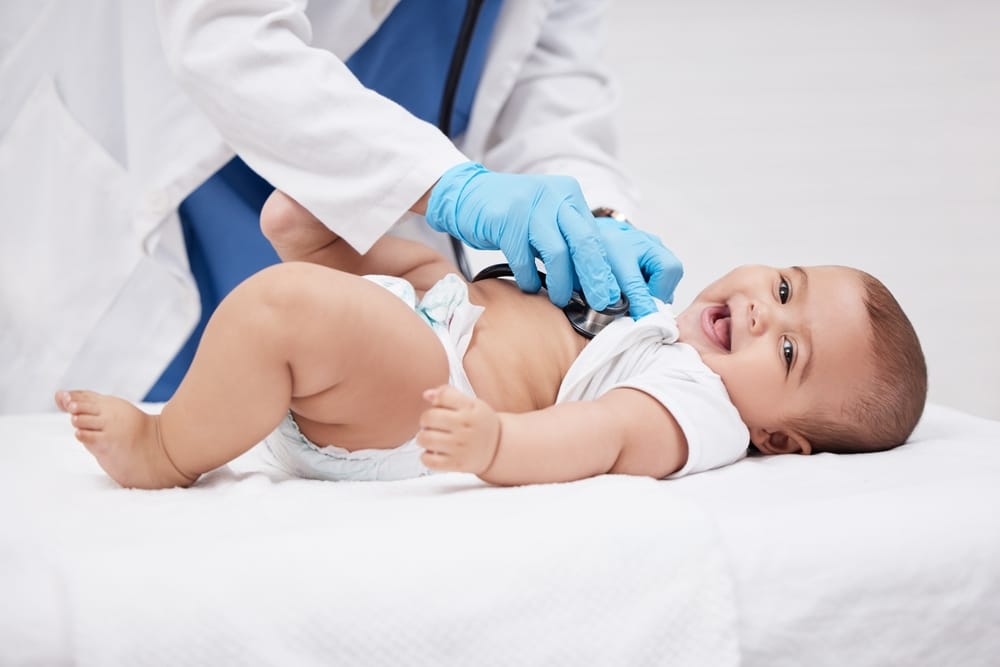
It’s possible to catch a common cold any time of the year, though certain viruses such as Influenza, Rhinovirus, RSV and Rotavirus which are more common in the winter.
What is Influenza?
Influenza (also known as flu) is a contagious respiratory illness caused by flu viruses. There are two main types of influenza (flu) virus: Types A and B – that routinely spread in people (human influenza viruses) are responsible for seasonal flu epidemics each year. Influenza A viruses can be broken down into sub-types depending on the genes that make up the surface proteins. Over the course of a flu season, different types (A & B) and subtypes (influenza A) of influenza circulate and cause illness. It can cause mild to severe illness, and at times can lead to death. Flu is different from a cold. Flu usually comes on suddenly. People who are sick with flu often feel some or all of these symptoms: Fever (feeling feverish/chills), cough, sore throat, runny or stuffy nose, muscle or body aches, headaches, fatigue (tiredness), some people may have vomiting and diarrhea, though this is more common in children than adults.
What’s the Difference Between Influenza and a Cold?
| Signs and Symptoms | Influenza | Cold |
| Symptom onset | Abrupt | Gradual |
| Fever | Usual; lasts 3-4 days | Rare |
| Aches | Usual; often severe | Slight |
| Chills | Fairly common | Uncommon |
| Fatigue, weakness | Usual | Sometimes |
| Sneezing | Sometimes | Common |
| Stuffy nose | Sometimes | Common |
| Sore throat | Sometimes | Common |
| Chest discomfort, cough | Common; can be severe | Hacking cough |
| Headache | Common | Rare |
Respiratory Syncytial Virus
Respiratory syncytial virus, or RSV, is a common respiratory virus that usually causes mild, cold-like symptoms. Most people recover in a week or two, but RSV can be serious, especially for infants. In fact, RSV is the most common cause of bronchiolitis (inflammation of the small airways in the lung) and pneumonia (infection of the lungs) in children younger than 1 year of age.
What is Rotavirus?
Rotavirus infection is most common in infants and young children. However, older children and adults also can get sick from rotavirus. Once a person has been exposed to rotavirus, it takes about 2 days for symptoms to appear. Children who get infected may have severe watery diarrhea, vomiting, fever, or abdominal pain. Vomiting and watery diarrhea can last 3 to 8 days. Additional symptoms may include loss of appetite and dehydration (loss of body fluids), which can be especially dangerous for infants and young children. Adults who get rotavirus disease tend to have milder symptoms. Children, even those who are vaccinated, may get infected and sick from rotavirus more than once. That is because neither natural infection with rotavirus nor vaccination provides full protection from future infections. Children who are not vaccinated usually have more severe symptoms the first time they get rotavirus disease. Vaccinated children are less likely to get sick from rotavirus.
Rhinovirus and Enteroviruses
Rhinovirus and Enteroviruses can cause a wide range of symptoms, from very mild to very serious. Children may have high fever, sore throat (sometimes that can have small, painful sores in their mouth), vomiting, diarrhea, headache, rashes and/or conjunctivitis (redness of the eye). These viruses can also cause meningitis (look for severe headache and stiff neck) and myocarditis (showing up as chest pain), an infection of the heart muscle.
Both Enterovirus and Rhinovirus can mimic the symptoms of strep throat. So, it’s always good to be evaluated for Strep Throat in the office, since we CAN give specific medicine to treat strep.
How To Prevent Spreading a Virus
To prevent the spread of these and other viruses, keep up your vigilant hand-washing even in the summer, especially after diaper changing or using the restroom. Children with fever or other signs of illness should stay home from camp, swimming pools and child care centers for the first few days of illness. Fortunately, most children recover from these viruses within 7-10 days. As with any viruses, there’s no specific treatment (even Tamiflu does not kill flu virus – it just prevents spread and further replication of more virus in the infected person) other than relieving pain and fever with acetaminophen or ibuprofen, and providing plenty of fluids to prevent dehydration.
Treatment For Winter Viruses
Treatment: The goal of treatment is to provide symptom relief for these illnesses while the body heals itself or to prevent secondary complications like dehydration.
- Fever or Pain: Use Tylenol every 4-6 hrs or Motrin/Advil (for infants > 6 mo. of age and older) every 6-8 hrs
- Sore throat: May use Benadryl /Maalox: mix equal parts of each (follow Benadryl dosing information on package or ask your provider for dosing instructions) every 4-6 hrs to coat back of throat and ease pain. Swish and swallow every 4-6 hrs as needed.
- Diarrhea: Water, Gatorade or Pedialyte as needed to replace GI losses and maintain hydration, BRAT diet, avoid dairy/juices/fatty or spicy foods. Probiotic daily will help reduce days of diarrhea x 2. Return for s/s of dehydration, diarrhea > 6 stools a day or > 10 -14 d total duration of diarrhea, blood in stools or recurrent vomiting.
- Vomiting: May use Zofran sparingly to control vomiting. Wait 20 min after vomiting and then slowly begin giving small amounts of Pedialyte or gatorade. Watch for signs and symptoms of dehydration that would require child to return to office to be evaluated.







